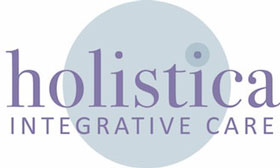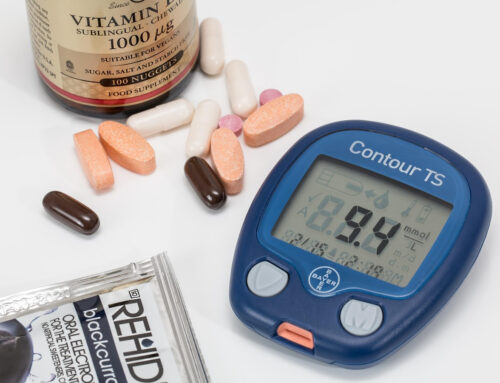
If you’ve been feeling chronically unwell, yet conventional lab results keep coming back “normal” and providers tell you nothing is wrong, you are not alone. You may be suffering from mold illness.
One of the most overlooked root causes of persistent health issues is exposure to mold and mycotoxins. These hidden environmental toxins can silently undermine your immune system, brain, hormones, and gut, often without clear warning signs.
What Is Mold and Mycotoxin Illness?
Mold is a type of fungus that grows in damp, warm, and humid environments—think water-damaged buildings, basements, bathrooms, air conditioning systems, and even food. While not all molds are harmful, some species release mycotoxins, toxic compounds that can cause a wide range of symptoms, especially in individuals with genetic susceptibility, compromised detox pathways, or ongoing immune dysfunction.
This condition is sometimes referred to as:
- Chronic Inflammatory Response Syndrome (CIRS)
- Biotoxin illness
- Mold toxicity or mold illness
One common misconception about mold is that if you can’t see visible “black mold,” you have nothing to worry about. This is completely false, as mold can often hide behind walls, beneath floorboards, and in ventilation systems, wreaking havoc without ever been seen.
Common Symptoms of Mold and Mycotoxin Exposure
Mold illness is often a great mimicker—its symptoms overlap with many other conditions, such as chronic fatigue syndrome, fibromyalgia, Lyme disease, and autoimmune disorders. Some common signs include:
- Fatigue that doesn’t improve with rest
- Brain fog, memory issues, poor concentration
- Anxiety, depression, or mood swings
- Sinus congestion, post-nasal drip, chronic cough
- Sensitivity to smells, light, or chemicals
- Digestive issues: bloating, diarrhea, food sensitivities
- Hormonal imbalances (especially thyroid and adrenal)
- Sleep disturbances
- Muscle pain, joint pain, or headaches
- Skin rashes, hives, or itching
- Pain, tingling, numbness, and sense of internal vibration
If you notice that your symptoms worsen in certain environments (like old buildings or damp environments), or that symptoms spontaneously improve whenever you go on vacation, this may be a clue that mold exposure is at play.

How Does Mold Make You Sick?
Mold illness is not just about inhaling spores. The real trouble begins when mycotoxins, which are tiny and fat-soluble, enter the body and get stored in tissues. In genetically susceptible individuals (especially those with HLA-DR gene variants), the immune system doesn’t effectively recognize and clear these toxins, leading to chronic inflammation.
Key mechanisms include:
- Immune dysregulation
- Neuroinflammation (leading to brain fog and mood changes)
- Mitochondrial damage (contributing to fatigue and energy issues)
- Gut microbiome disruption (causing digestive upset, constipation, nausea, etc.)
- Hormone (endocrine) disruption
Diagnosing Mold and Mycotoxin Illness
Diagnosis can be tricky because conventional doctors often don’t test for mold-related illness. When it is done, the first line is often mold allergy testing. This is a blood test that looks for an IgE-mediated allergic response to mold. The drawback of this is that not everyone who is exposed to mold & mycotoxins will develop an allergy, leading to underdiagnosis.
Some additional tests that can be useful in detecting mold-related illness include:
- Mycotoxin testing (urine-based) – uses mass spectrometry to detect toxins like Ochratoxin A, aflatoxins, and gliotoxin in the body.
- Visual contrast sensitivity test (VCS) – to assess neurotoxic effects
- Inflammatory & immune markers – like TGF-β1, MMP-9, C4a, CRP, & ESR
- Genetic testing – HLA-DR typing for mold susceptibility
- MARCoNS – Multiple Antibiotic Resistant Coagulase Negative Staphylococci – refers to a type of antibiotic-resistant staph bacteria that can reside in the nasal passages. These bacteria are particularly prevalent in individuals with mold exposure and biotoxin illness.
- Environmental testing – air and dust sampling in the home to measure mold spore and mycotoxin levels

A Functional Approach to Healing from Mold Illness
Healing from mold and mycotoxin illness is a journey. It is important to recognize that healing may not be linear and will definitely not happen over night. Additionally, an individualized treatment approach is crucial, as mold illness can manifest very differently in each person, and not everyone responds the same way to treatment.
Some key components of a mold protocol include:
1. Get Out of Exposure
This is the most crucial (and often most difficult) step. You must identify and remove yourself from the moldy environment or remediate the space thoroughly with professionals who specialize in mold remediation.
Avoiding common mold-containing foods (like coffee, dried fruit, peanuts, cheese, and mushrooms) is another important piece to reducing exposure.
2. Bind and Eliminate Toxins
Mycotoxins are stubborn. Support detoxification with:
- Binders like activated charcoal, bentonite clay, cholestyramine, or zeolite
- Glutathione (liposomal or IV) – the body’s master detoxifier
- Liver support with herbs like milk thistle, dandelion root, and NAC
- Antioxidants & nutrient replenishment such as vitamin C, vitamin E, lipoic acid, green tea EGCG, polyphenols, selenium, and zinc.
- Hydration and fiber to support elimination through urine and stool
- Drainage remedies like UNDAs and Pekanas
3. Repair the Gut and Immune System
Support healing with:
- Probiotics (especially Saccharomyces boulardii)
- Anti-inflammatory diet (gluten/dairy-free, low sugar, no alcohol)
- Nutrients like L-glutamine, zinc, quercetin, and vitamin D
- Immunomodulators like mushrooms, adaptogenic herbs or colostrum
- Low dose immunotherapy (LDI) – homeopathic preparations designed to re-train the immune system to stop reacting to mold
4. Support Mitochondria and Brain Health
Mycotoxins are mitochondrial toxins. Rebuild energy and cognitive function with:
- CoQ10, PQQ, B vitamins
- Omega-3s and phosphatidylcholine
- Low-level light therapy (red/NIR light)
- Gentle movement to support circulation and lymph flow
6. Kill mycotoxins
Once detox/drainage pathways are open and the body is well-supported, incorporating anti-fungals & other antimicrobials can be an important part of recovery from mold.
Some examples include:
- Olive leaf extract
- Pau d’arco
- Monolaurin
- A-FNG
- Thyme & oregano
- Grapefruit seed extract
- Colloidal silver
5. Symptom-management
Depending on the specific presentation, additional management with support to the urinary tract, skin, sinuses, respiratory tract, cardiovascular system, and nervous system may be indicated.
You’re Not Crazy—and You’re Not Alone
One of the most heartbreaking aspects of mold illness is that many patients are dismissed, misdiagnosed, or told “it’s all in your head.” But mold-related illness is real, and recovery is possible with the right support.
If you suspect mold or mycotoxins may be affecting your health, it is important to work with a mold-literate practitioner who understands environmental illness and can guide you through personalized testing, detoxification, and healing.
Think you might be suffering from mold illness? Give us a call to schedule a consult!
Know someone who could benefit from this knowledge? Share this with two people and help them get started on the road to better understanding their health!



